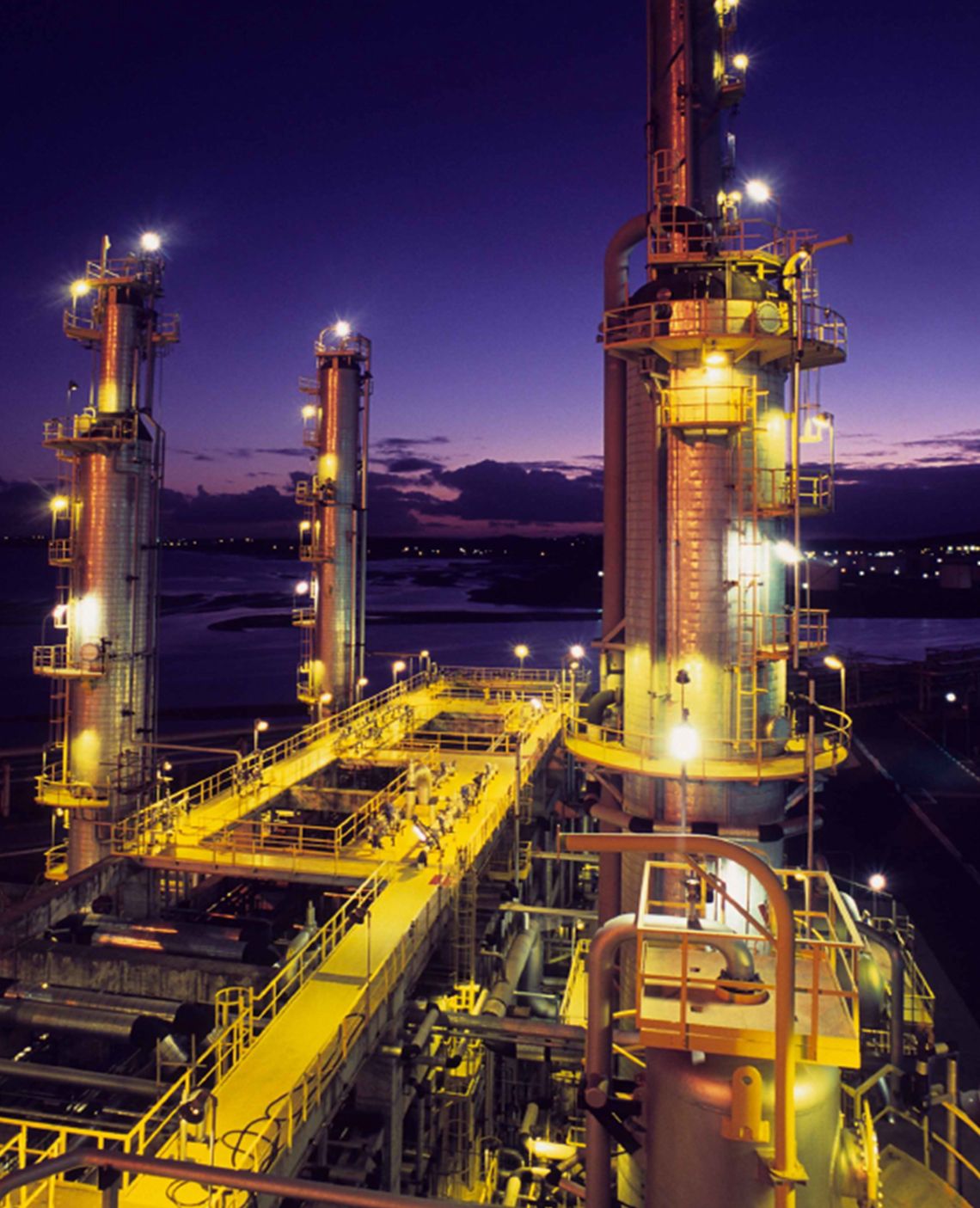Guide to Explosion Proof Lighting
LIGHTING & THEIR BENEFITS FOR USE IN HAZARDOUS ENVIRONMENT
Hazardous locations required intrinsically safe lights that can work in the presensce of dust and flammable petrochemicals in industrial environment where ignitable flammable gases are present.The main purpose of these lights is to stop an explosion from escaping, whenever one occurs.Confined areas provide a perfect environment for hazardous vapours and gases to accummulate.These Lights are Atex/IECEx/UL Certified and meets hazardous areas classification requirements.LED explosion proof lights have many benefits over conventional explosion proof lights.These fixtures have an average life expectancy of 50,000+ hours.While conventional metal halides/sodium vapour lamps have an average life span of 12,000 and 20,000 hours.LED explsoion proof fixtures maintain their lumens extremely well.Their Lumen maintenance (L70) is typically over 50,000+ hours.During that period we normally replace 2 to 3 HID Lamps.Explosion proof LED Lights are more energy efficient than traditional explosion proof lights.Longer life span of LEDs contributes to lower operating and maintenance costs.
UNDERSTANDING CLASSES,DIVISIONS & ZONES FOR HAZARDOUS AREA LIGHTING
Hazardous workplace conditions can vary differently which means a comprehensive rating system becomes necessary in order to ensure a safe work environment.Understanding the way these areas are classified is important in order to correctly choose which type of light is right for a specific workplace.Hazardous and classified locations can be defined as locations where fire or explosion hazards may exist due to the presence of flammable gases or vapors, flammable liquids, combustible dusts and ignitable fibres or flyings.Hazardous locations divided into Classes,Divisions and groups in NEC US Standards.In IEC Zone classification, it is divided into Zones.
Classes
Classes define the general nature of the hazardous material that may be in the sorrounding atmosphere.
Class I
Class I Locations are those in which inflammable gases or vapours are or may be present in sufficient quantities to produce a fire or explosion if ignited.
Class II
Class II Locations are hazardous because of the presence of combustable dust particles that are or may be present in sufficient quantities to produce a fire or explosion if ignited.
Class III
Class III Locations are those that are hazardous because of the presence of easily ignitable fibers of flyings,that are or may be present in sufficient in quantities to produce a fire or explosion if ignited.
Divisions
Divisions define the probability of hazardous material or element being present in sorrounding atmosphere that has the ability to be ignited.
Division 1
Always present, refers that the substance in the class, it is paired with, has a high probability of producing and ignitable or explsoive mixture due to it being present contineously ,intermittently or periodicaly.The substance may also come from the equipment in the area under normal circumstances.
Division 2
Not normally present, refers that the substance in the class, it is paired with, has a low probability of producing and ignitable or explsoive mixture due to it being present only during abnormal circumstances or for a short period of time,such as a system breakdown or container failure.
Groups
Further grouping of each hazardous working environment is necessary due to the wide range of flammable materials that could be present in different industries.The different groups, and the classes they are associated with, are listed below:
Class 1 : Gases
Group A refers to an area that contains Acetylene
Group B refers to an area that contain flammable gas,liquid produced vapour or combustible liquid-produced vapour mixed with air that has the potential to catch fire and burn or explode.
Group C refers to an area that contain flammable gas,liquid produced vapour or combustible liquid-produced vapour mixed with air that has the potential to catch fire and burn or explode.
Group D refers to an area that contain flammable gas,liquid produced vapour or combustible liquid-produced vapour mixed with air that has the potential to catch fire and burn or explode.
Class 2 : Dusts
Group E refers to an area that contain combustible metal dusts such as aluminium ,magnesium,bronze,chromium,zinc and other commercial alloys.produced vapour mixed
Group F refers to an area that contain dusts with carbon or carbon compounds,carbon black,coal black,charcoal,coal or coke dusts.
Group G refers to an area that contain combustable dusts that are not included in group E and F,such as flour,grain,sugar,wood,starch,chemicals and plastics
IEC Zones Classifications
Hazardous areas classifed in three zones:
Zone 0 refers to gases
Zone 1 refers to vapours
Zone 2 refers to mists
Hazardous areas classifed in three zones: Zone 20 refers to Dust Zone 21 refers to fibers Zone 22 refers to flyings
Zone : Gases
Zone 0
refers to flammable gases or vapours that are present contineously or for long periods of time in ignitable concentrations.
Zone 1
refers to flammable gases or vapours that are present in ignitable concentrations that are likely to occur under normal operating conditions.
Zone 2
refers to flammable gases or vapours that are present in ignitable concentrations & are not likely to occur under normal operating conditions & present for only a short period of time.
Zone : Dusts
Zone 20
refers to flammable dusts,fibers or flyings that are present contineously or for long periods of time in ignitable concentrations.
Zone 21
refers to flammable dusts,fibers or flyings that are present in ignitable concentrations that are likely to occur under normal operating conditions.
Zone 22
refers to flammable dusts,fibers or flyings that are present in ignitable concentrations & not likely to occur under normal operating conditions and presnet for short period of time.
Comparison
Gas or Vapour
Class I, Division 1
Class I, Division 2
Zone 0,1
Zone 2
Dust
Class I, Division 1
Class II, Division 2
Zone 20
Zone 22
Fibers or Flyings
Class III, Division 1
Class III, Division 2
No Equivalent
No Equivalent
Classifications of Divisions and Zones
Contineous hazard
A place in which an explosive atmosphere is contineously present
Division 1
Zone 0 / Zone 20 Cat 1
Intermittent hazard
A place in which an explosive atmosphere is likely to occur in normal operation
Division 2
Zone 1 / Zone 21 Cat 2
Hazard abnormal condition
A place in which an explosive atmosphere is not likely to occur in normal operartion, but may occur for short periods
Division 1
Zone 2 / Zone 22 Cat 3
ATEX
Temperature Classification
Applications Areas
- Chemical processing plants
- Aircraft Maintenance areas
- Enclosed fueling stations
- Paint spray booths
- Offshore Oil and Gas rigs
- Chemical storage units
- Ship tanks
- Grain Silos
Typical IEC/CENELEC Product Markings
Gas Mist Vapor
Gas Mist Vapor
Continuously for long periods or frequently
Zone 0
1G
very high
Gas Mist Vapor
Occasional occurrence
Zone 1
2G
high
Gas Mist Vapor
Not likely, but if it does occur only rarely and for a short period
Zone 2
3G
Increased
Dust
Dust
Period of precense of the flammable substances
Zone 20
1D
III
very high
Dust
Occasional occurrence
Zone 2
2D
III
high
Dust
Not likely, but if it does occur only rarely and for a short period
Zone 22
III
3D
Increased
Gas Groups
Marking
- IIA
- IIB
- IIC
Gas
- Propane
- Ethylene
- Hydrogen
Dust Groups
Marking
- IIIA
- IIIB
- IIIC
Gas
- Combustible flyings
- Non-conductive dust
- conductive dust












